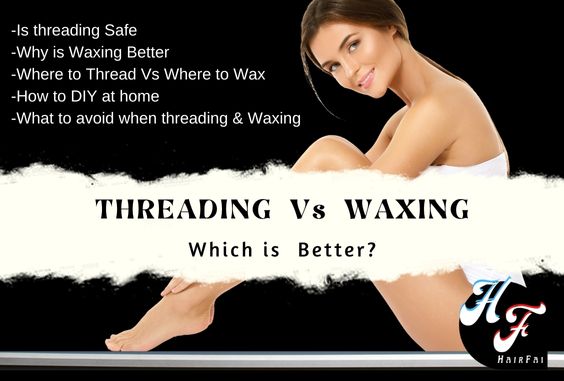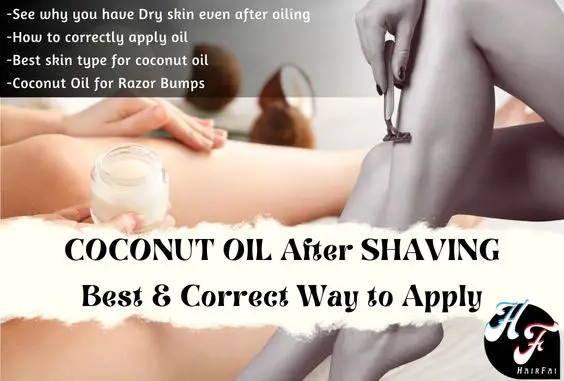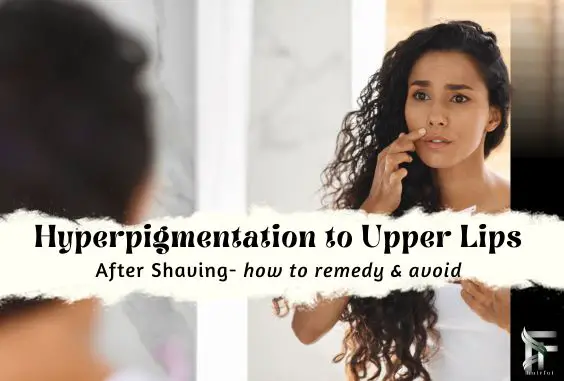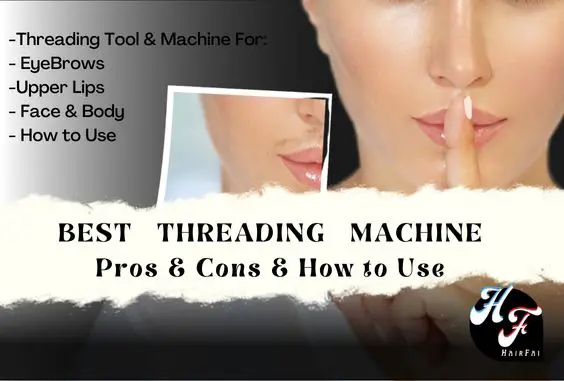Folliculitis After Waxing- How To Treat & Prevent
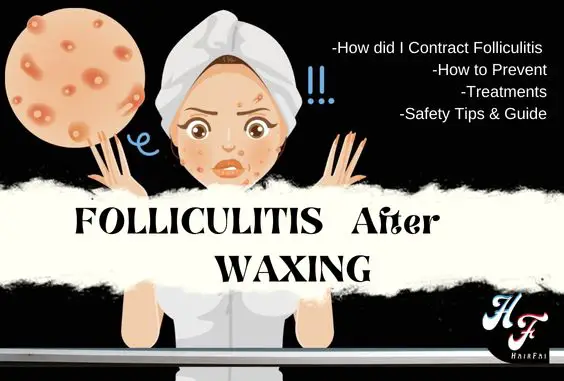
Folliculitis after waxing is a common skin condition, experienced by persons after having their waxing session. It presents itself as a bumpy, pimple-like rash, that tends to be very itchy. Folliculitis is often caused by bacterial or fungal infections.
Now that we’ve covered what it is. Let’s get into the Causes, Preventions, and it’s treatments.
Does Waxing Cause Folliculitis
Waxing does not directly cause any cases of folliculitis, but it is a contributing factor. By leaving behind open pores, exposed skin, and tiny bruises, is what’s needed for bacteria and fungi to invade our pores and make it their breeding ground, infecting our open plug. Citation
we usually experience folliculitis in areas that produce a lot of natural oil and have larger pores. These places are mainly:
- Eyebrows
- Upper Lips Area
- Bikini Areas
- Under Arms
Allergic & Histamine Reaction to Waxing -Treat & Prevent
Click here to see how you can Effectively Tame Your Eyebrows right at home
How to Treat Folliculitis after waxing
Treating folliculitis after waxing could be a bit tricky. Due to the fact that our skin was just waxed and is more sensitive to certain chemicals and ingredients. So, to avoid any further reaction, you can try these:
1 – Apply a Warm Compress
Applying a warm compress over the infected area can kill and calm the area, as the causing bacteria don’t do well under certain heat temperature.
2 – Soap Wash
Clean the area (Folliculitis area)with warm water and soap twice daily, this can treat inflamed pores, acne, and even severe cases of folliculitis.
Soap Bars contain ingredients such as; Zinc pyrithione, Ketoconazole, and Salicylic acid. Which can be found in any Drug Store nearby. OR Click here on Amazon to see a Soap Bar that contains zinc pyrithione, it’s an exfoliant, that moisturizes and soothes the skin, the perfect cleanser for after waxing.
3 – Salt and water solution
Warm water will help soften and open your infected pore, as salt which contains antibacterial properties can cleanse it thoroughly.
- Make a solution of salt and warm water
- After the salt is completely diluted, damp a clean towel in the solution, and squeeze out extra water until damp.
- Gently press it over the waxed area where you’re experiencing the breakout.
- Repeat this 2-3 times daily, as needed.
4 – Avoid further Irritation
Avoid any form of irritation to the area; like switching to loose clothing to avoid acne and folliculitis from getting more severe. Doing this will cause less irritation seeing that there will be no friction between clothing and the infected area.
Moisturizing after waxing is also another great way to soothe any irritation. It is highly recommended after any waxing session. So click here to see our article on How to correctly moisturize after waxing and which is best for your now sensitive skin
5 – Apply Antibiotic Creams
Get OTC antibiotic cream as it will help target bacteria and dry down infected pores. Seek recommendations from a pharmacist.
6 – Use an Anti-itching Lotion
Over-the-counter anti-itching lotions and creams can help soothe folliculitis symptoms. Look for ones containing hydrocortisone (a kind of steroid medication that helps bring down itching, swelling, and redness).
OR Click here to see Safe and effective Anti-itch creams and how to correctly apply them-Itchy After Waxing– Causes, Prevention & How to Treat it
7 – See a Dermatologist
It is advisable to seek advice and medical help from a certified dermatologist especially if your case of folliculitis is getting worst.
Does Waxing actually cause Wrinkles, Loose & Saggy Skin? Click here to see the truth.
Disadvantages & Benefits of Waxing – What You Need to Know
Explanatory Video on Folliculitis
Related Articles
Folliculitis After Waxing- How To Treat & Prevent
Does Eyebrow Threading Hurt- How To Prep & What To Expect
Pimples & Bumps After Threading- How to Treat & Prevent
Threading Hair Aftercare- What to Do & Apply to Soothe Skin
Does Face Waxing Cause Acne, Bumps, & Larger Pores
Eyebrow Laser Hair Removal- Risk, Precare, Aftercare & Cost
Wrinkles, Loose & Saggy Skin After Facial Wax- Actual Truth
Disadvantages & Benefits of Waxing – What You Need to Know
How To Avoid Folliculitis After Waxing
Folliculitis is indeed a temporary skin condition, that can be treated using OTC Drugs or even DIY Remedies. However, experiencing it can be a problem to hide depending on where it is, and tends to be very irritating due to its itchiness. Citation
It’s one of those things you would rather avoid than treat. So, here are some important points you should keep in check and practice.
1 – Patch Test Your Wax
As we mentioned above this is the main first step. This will help you in deciding if waxing is even for your skin. If not, it could be the reason for your cases of folliculitis. Seeing that your skin may not be able to handle the irritation from Waxing. Hence, reacting with breakouts which leads to folliculitis.
2 – Properly Schedule Your Waxing Appointments
Keeping the procedure done in a clean and healthy environment really does make a huge difference. As it provides little to no chance of folliculitis because there will be no bacterial contraction.
It is always recommended to Never get your Waxing done during that time of the month. And why is that so? Well:
- Our level of hormones such as estrogen and progesterone drops leaving us with very dry skin, and Waxing works best on healthy moisturized skin.
- Periods increase the sensitivity to pain throughout your cycles, meaning that Waxing could be a bit more painful than usual.
- It also leads to more chances of post-Hyperpigmentation.
3 – Use Clean & New Tools
When visiting a beautician for your Waxing session it is important that you ensure that you are being worked on with fresh wax. And Tools such as the tweezers should be sterilized before the session begins.
Avoiding cross-contamination is one of the main key points here, to reduce any chances of folliculitis after.
4 – Do Not Touch the Waxed Area
You are always advised to avoid touching the waxed area, but sometimes without a given reason. Well, I can assure you that there is a very good reason.
Touching the area can cause bacteria to transfer from your hands to the waxed area. So before reaching for that itch or the urge to touch try sanitizing your hands first.
5 – Practice Proper Pre-Care And Aftercare
Proper prepping the skin for what’s to come is essential, as treating it afterward. Especially if you are going to DIY at home, it is important that you are aware of all the steps it really entails. Because pre-care does determine the success of your waxing procedure.
Click here for A Step-By-Step Aftercare Guide After Waxing
6 – Do Not Wax Over Acne Areas
Waxing over acne or pimples will increase the chance of developing folliculitis, as it will only cause irritation and more bruising. Sometimes the inflamed plug gets damaged in the process and the wax could spread the inflammation around the area. Only, increasing the risk of folliculitis on a bigger scale (larger surface area). Citation
7 – Avoid Public Places
After a fresh wax, it is best to stay out of public and shared equipment such as; water slides, pools, and even Hot tubs. as these could increase the chances of contracting bacteria and developing severe cases of folliculitis.
8 – Wear Loose Clothing
Wearing tight clothing after waxing could cause folliculitis. Your now extra sensitive skin is abrasively pressed and rubbed against harsh fabrics. Causing irritation and also leaving behind tiny bruises.
This creates access for bacteria to seep into those exposed areas. Now with all this happening, you could develop pimples then folliculitis.
9 – Exfoliate
Exfoliating after waxing will help reduce any chances of ingrown hair. As they are also one of the main reasons for leading folliculitis.
Click here to get Painless waxing – See which numbing suits you
Why Do I Get Folliculitis After Waxing
If waxing is part of your lifestyle, that means you’re always getting it done. And sometimes you notice that you’ll experience rare cases of folliculitis (meaning it skips through some waxing sessions). But, if you are experiencing it after every waxing session, there might be some things you need to look into. Citation
After waxing you could develop folliculitis because:
1 – Transferring Of Bacteria To The Skin
After your waxing session, you are often advised to not touch the area. This is mainly to avoid you transmitting bacteria to the waxed area. Which is now more easily prone to infection, and could lead to acne, developing into folliculitis.
2 – Unsanitary Environment
Along with removing our hair, waxing also removes the top layer from our skin(protective layer), which is made up of dry dead skin cells. So, being in an unclean environment where there are literally bacteria and other impurities in the air, increases the chances of them easily attaching themselves to your exposed skin (Waxed Area).
These bacteria and other organisms will stick to your skin, seeping into your open pores. Infecting your Pore Plug, making it their breeding ground. First, you will start noticing pimples, leading to acne, and then a full breakout (folliculitis).
3 – Tools & Equipment Are Not Properly Sterilized
Working with tools that are not properly sterilized before your waxing session, could cause acne or worst, lead to folliculitis. This is why you will notice many beauticians would open or sterilize the needed tools in your presence.
Providing a safe and sterilized environment helps in creating a safe working space for your clients.
4 – Poor Storage Of Tools And Equipment
Leaving your equipment and tools packed away in an unclean storage space could lead to bacterial build-ups on them. And is one is the main reasons for unsanitary equipment and tools. Cleaning these tools once before your session would not be that reassuring.
As these bacteria can be transferred to your open pores, inflame them, and lead to folliculitis. Beauticians and persons who does their own waxing need to ensure that they have proper storage for the equipment.
5 – Poor Pre-Care Before The Waxing Session
When you don’t correctly prep your skin for the trauma it’s about to receive it could cause the skin to react adversely. Which could lead to prolonging the temporary after-effect. With this happening, it could cause pimples and eventually acne.
You could prep your skin by:
- Keeping yourself hydrated
- Moisturized skin helps to shorten the hyperpigmentation period.
- Pause skincare, especially ones containing retinal.
- Patch Testing is the best way to check for allergies and if your skin can handle being waxed.
6 – Poor Aftercare For Waxing- Post Effects
We all experience the temporary after-effect that comes with waxing. But how we treat it, is what’s really important. Incorrectly treating bumps could lead to pimples, which causes acne and afterwards breakouts(folliculitis).
Especially when it comes to oiling your skin after waxing you are to ensure you are using the correct oil which is gentle enough for freshly waxed skin and even for your skin type.
to avoid oiling your skin wrong after waxing, which could lead to clogging of pores and acne breakouts. Click here to see our article on Skin oiling after waxing- Everytihing you need to know.
Related Articles
Folliculitis After Laser Hair Removal -Treated & Explained
Coconut Oil After Shaving – Benefits & How to Use Correctly
Deodorant After Laser Hair Removal – Potential Dangers and Risks
Deodorant After Waxing – Possible Dangers
What to Do After Waxing Underarms- Aftercare Guide & Tips
Benefits & Disadvantages of Waxing Underarm Vs Other Methods
What to know before Threading -Disadvantages & Benefits Of Threading Hair

